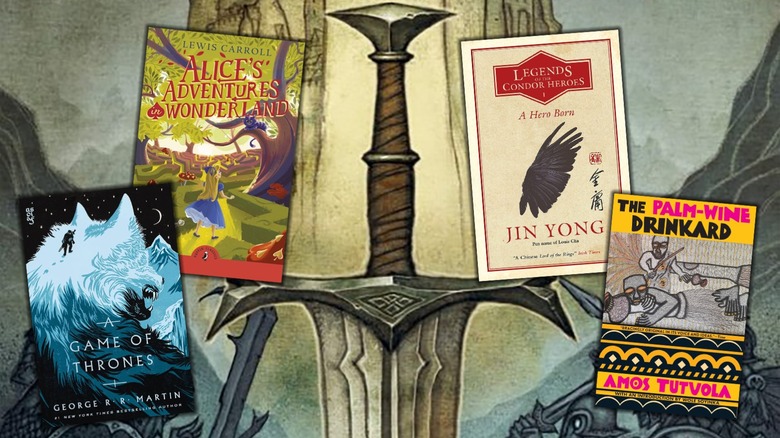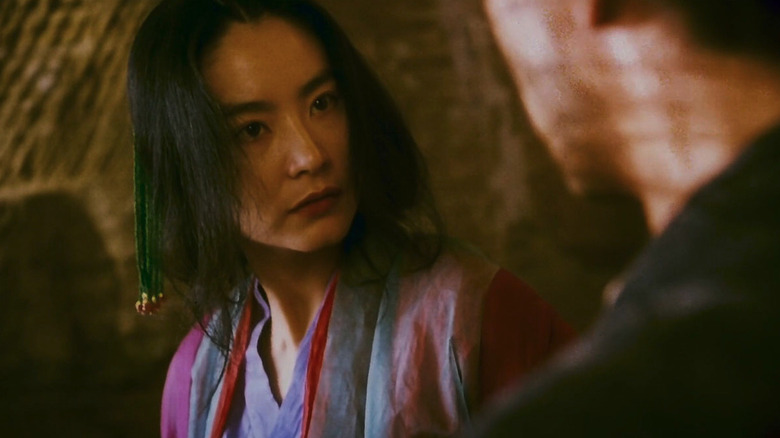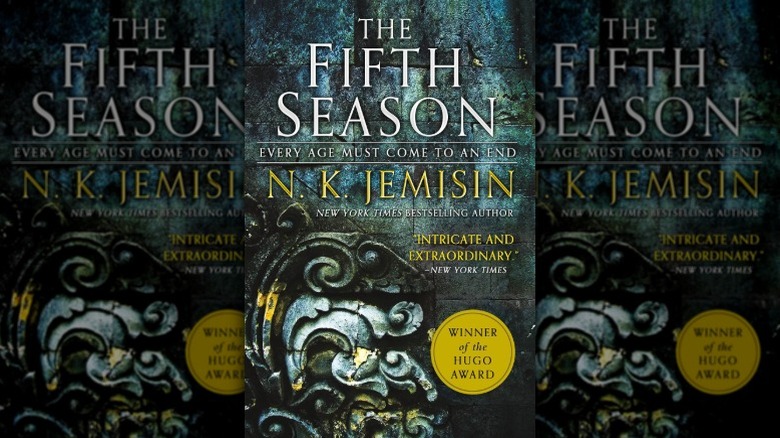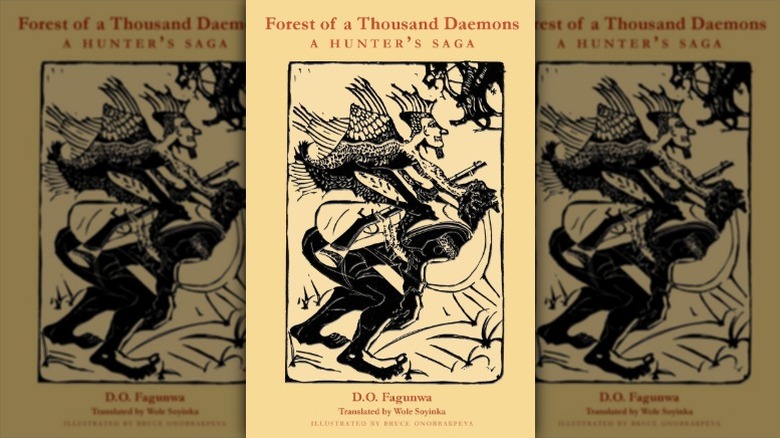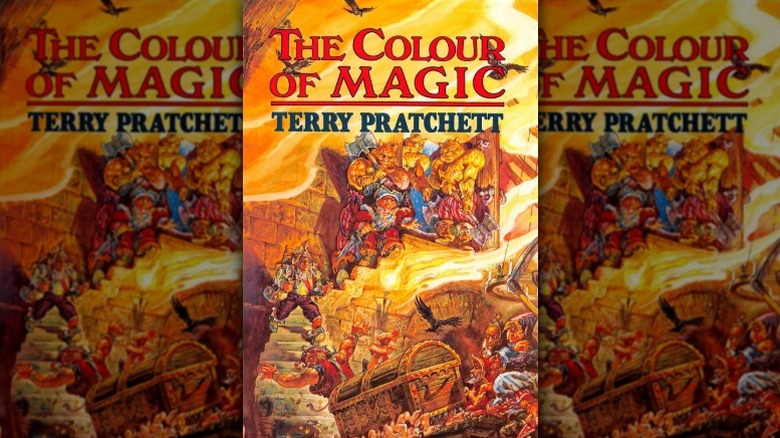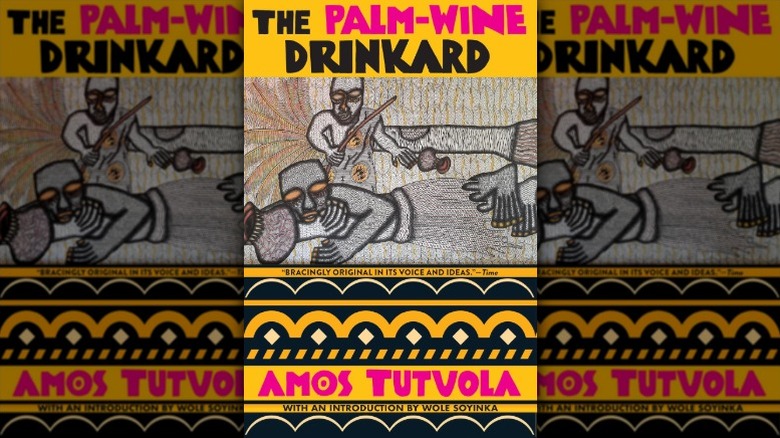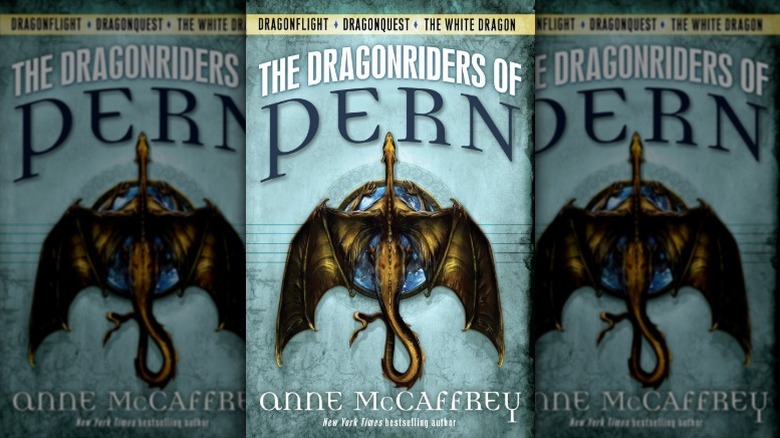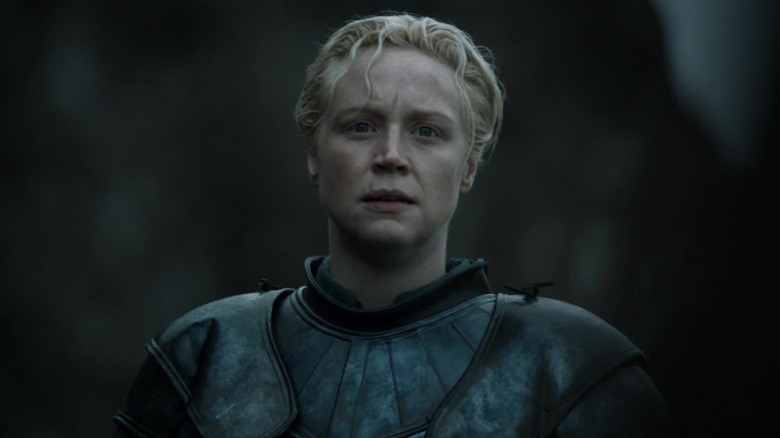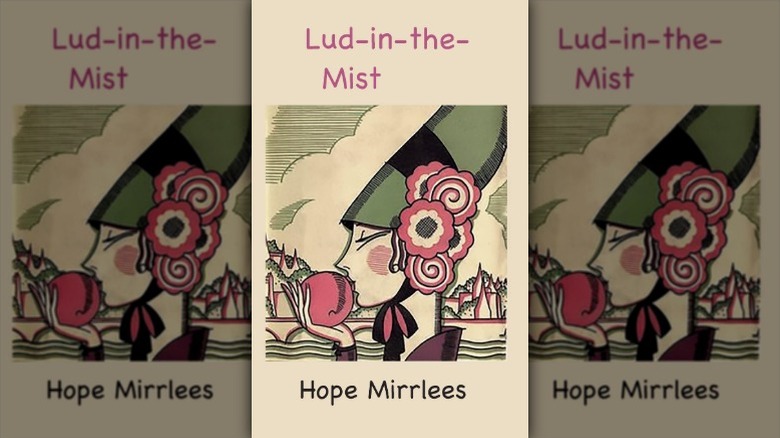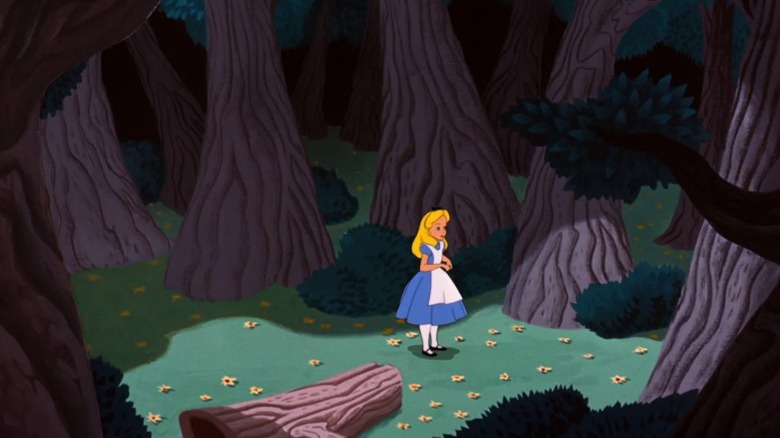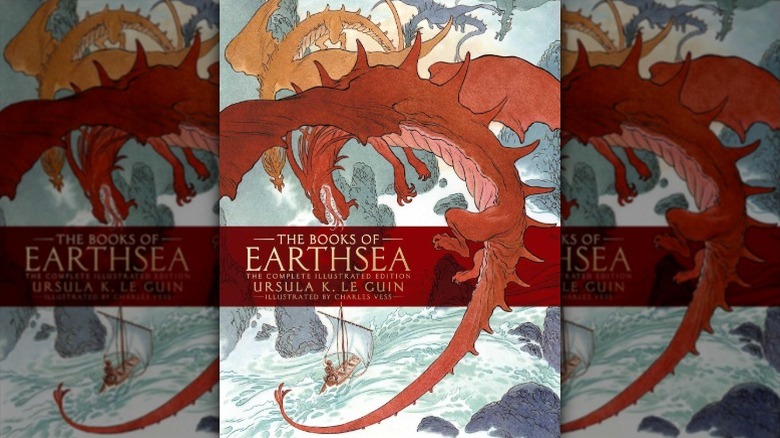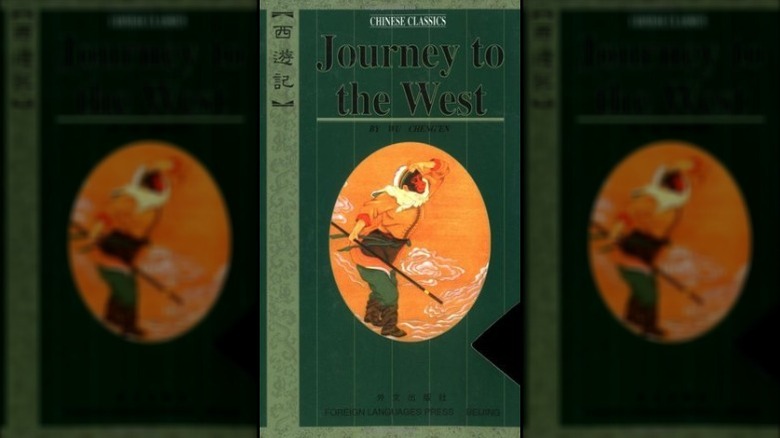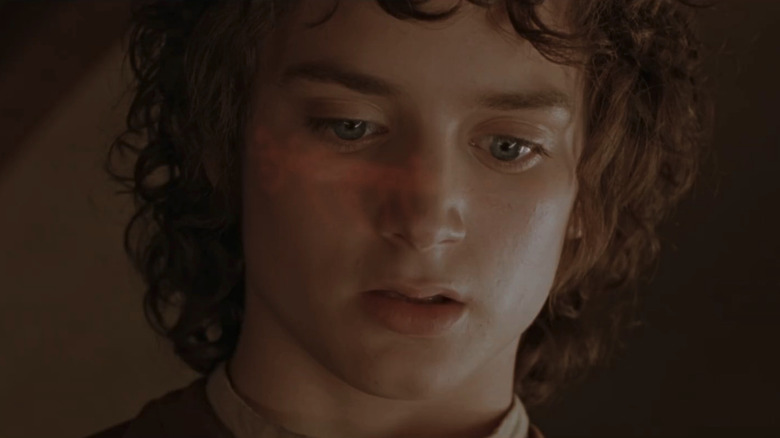The 12 Best Fantasy Books Of All Time, Ranked
We may receive a commission on purchases made from links.
The beautiful thing about speculative fiction is that, in the manner of a magical artifact or a talented shapeshifter, it can take any form. Much like the best sci-fi books of all time, the greatest fantasy books cover a wide ground spanning centuries, countless languages, myriad subgenres, and pretty much the entire globe.
Naturally, a list of the best fantasy literature throughout history would need to get into the hundreds to even begin to be truly comprehensive. But we might as well start here. The works ranked below (including series and standalone novels, as befits the genre) are all not just hugely important, innovative, and influential staples of different eras in the fantasy fiction canon, but also, at the simplest level, incredible reads — works of drama, comedy, mystery and adventure that demonstrate how far imagination put to paper can go.
Here are what we deem the 12 best fantasy books of all time.
The Legend of the Condor Heroes by Jin Yong
The Chinese wuxia genre is among the most important branches of fantasy fiction in all global literature. Its stories of epic character-building journeys dotted with martial arts action have instigated imaginations for centuries and inspired countless works of film and television not just in China but all over the world. On this list, we're repping it with "The Legend of the Condor Heroes," the massively popular and influential magnum opus of Hong Kong novelist Jin Yong.
Originally published in serial form between 1957 and 1959, and later translated into English as a tetralogy made up of the books "A Hero Born," "A Bond Undone," "A Snake Lies Waiting," and "A Heart Divided," "The Legend of the Condor Heroes" is set during the Jin-Song Wars of the 12th and 13th centuries. The sprawling plot — which was adapted into the 1994 Wong Kar-Wai film "Ashes of Time" (pictured above) — concerns the parallel stories of Guo Jing and Yang Kang, the sons of two sworn brothers torn apart by the war.
While the kindhearted Guo Jing grows up in Mongolia and learns martial arts from the Five Greats alongside his lover Huang Rong, Yang Kang is raised as a nobleman in the Jurchen court and takes a shine to the arts of treachery and political maneuvering. As the two men come into a complex conflict with one another, Jin Yong weaves together fantasy and Chinese history with a finesse that's nothing short of enthralling to experience.
Broken Earth by N. K. Jemisin
The single most momentous occurrence in the last decade of fantasy literature was arguably the release of N. K. Jemisin's "Broken Earth" trilogy. Beginning with "The Fifth Season" in 2015, and on through "The Obelisk Gate" in 2016 and "The Stone Sky" in 2017, Jemisin built out a world so rich, expansive, and at once gobsmacking and terrifying that it immediately felt canonical — and she did it while sustaining a level of prose expressiveness, character complexity, and political intelligence that's vanishingly rare even among the best of contemporary genre fiction. Not for nothing, Jemisin became the first author ever to win back-to-back Hugo Awards for Best Novel in three consecutive years.
Set in a fictional planet whose inhabitants all occupy a single landmass known as the Stillness, the "Broken Earth" books present a rigidly-tiered, profoundly dysfunctional society organized around the figure of the Orogenes — people gifted with the power to control energy and create or stop earthquakes, and widely feared and persecuted unless they're handed over to be trained by an order of Guardians. Telling the parallel stories of Essun, Damaya, and Syenite, three Orogenes from different corners of the world whose lives intersect as a result of a climate change-driven war, Jemisin fearlessly probes the darkest imaginable depths of fantastical storytelling, trusting readers to keep up with the astonishingly dense creation that is the Stillness while rewarding them with haunting, moving, uncompromisingly great literature by the page.
Forest of a Thousand Daemons by D. O. Fagunwa
Nigerian writer D. O. Fagunwa was a pioneer in the authoring of Yoruba-language novels, and his 1938 debut "Ògbójú Ọdẹ nínú Igbó Irúnmọlẹ̀," published in English as "Forest of a Thousand Daemons: A Hunter's Saga," is not only a historical turning point for Nigerian literature but a monumental work in the history of written fantasy.
Deeply steeped in Yoruba spirituality, "Forest of a Thousand Daemons" is presented as the bildungsroman-esque recollections of an elderly man who introduces himself to the author — and to the reader — as the hunter Akara-Ogun. Born to a warrior and a witch, Akara-Ogun became an orphan at a young age, and, while out exploring the world on his own, he went on to have a series of adventures in the forest of Irunmale, populated by innumerable deities and mythological creatures.
Set over several years and buffeted by Fagunwa's enormously imaginative and poetic prose (done justice by the brilliant English-language translation of Nobel Prize in Literature laureate Wole Soyinka), the novel structures itself with the self-possessed allure of a classic fantasy saga, sending the reader down ever more intriguing paths that brim with both rollicking grandeur and tragic melancholy. It's a work as foundational to Africa's mythic imagination as the writings of Hans Christian Andersen and J. R. R. Tolkien are to Europe's — and every bit as riveting to discover for oneself in novel form.
Discworld by Terry Pratchett
While several of the works on this list are extensive multi-book affairs, it may be something of a stretch to consider Terry Pratchett's beloved "Discworld" books, a 41-novel series published over the course of 32 years (for those not familiar, yes — that's more than one novel per year), as a single "book." Even so, it would be outright impossible to compile a list of the greatest works of fantasy literature without including "Discworld" in its entirety, so here it stands.
Set on the Discworld, a flat planet which rests on the backs of four elephants carried by a giant turtle swimming through space, the "Discworld" series finds Pratchett melding a deep and abiding love for the tradition of fantasy tropes with an enlivening degree of comedic irreverence and political acuity. While the whole series shares an epic, expansive mythology with enough texture to endlessly fuel the reader's own imagination, each book explores its own unique little nook of the Discworld — a conceit that gave Pratchett the freedom to keep twisting his own creation into hilarious, inventive, and captivating knots over the decades, touching on everything from wizards to trolls to vampires to steampunk adventure to topical urban fantasy to the mythological exploits of Death himself. If ever there was a fantasy world you could get thoroughly lost in, it was the Discworld.
The Palm-Wine Drinkard by Amos Tutuola
Originally published in 1952, Amos Tutuola's "The Palm-Wine Drinkard" is a fascinating case study in the history of popular fantasy literature: One of the first African novels to be published globally in the English language, featuring a singular use of Yoruba-inflected modified English, it attracted significant criticism from Western critics for what was perceived as a technical crudeness and lack of refinement in its prose and storytelling, and from Nigerian critics for supposedly perpetuating negative stereotypes about African culture. Yet despite those critical reservations, "The-Palm Wine Drinkard" became a massive worldwide hit with readers, and has remained as such for decades, ultimately emerging as one of the most iconic works of non-Western genre fiction in the past century — which in turn led more and more critics to reappraise it.
If nothing else, it's worth discovering for yourself where you stand on the matter of the novel's merit, as well as Tutuola's merit as its writer; for the purposes of this list, we're going to go ahead and call "The Palm-Wine Drinkard" a masterpiece, full of exhilaratingly original writing and exuberantly alive evocations of Yoruba folklore that make it not only an unparalleled page-turner but the kind of literary experience that opens you up to new possibilities and horizons. Depicting in first person the story of a picaresque hero as he uses his wits and magical powers to bring back the deceased tapster who supplied him with his beloved palm wine, it's a fluid, hilarious, liberated, and altogether unforgettable work.
The Dragonriders of Pern by Anne McCaffrey
The "Dragonriders of Pern" series, commenced in 1967 and still going strong to this day, is one of those mainstays of the fantasy canon that can be equally fascinating to look back on as pillars of the genre and to keep up with as reflections of its ongoing transformations. On this list, we're including the original trilogy authored by series creator Anne McCaffrey, usually collected as "The Dragonriders of Pern" omnibus trilogy and consisting of 1968's "Dragonflight," 1971's "Dragonquest," and 1978's "The White Dragon."
Beginning with "Dragonflight," which made McCaffrey the first woman to win a Hugo Award for fiction, "The Dragonriders of Pern" introduces readers to the world of Pern, a planet colonized by humans through interstellar travel in the far-away future, and indigenously inhabited by intelligent fire-breathing dragons. Due to the periodic onslaught of a ravenous fungal plague known as Thread, human society in Pern exists in a medieval stage, and has lost touch with its own Earth origins.
It's in this context that the three original "Dragonriders of Pern" novels explore the culture of dragonriders who use the dragons to fight against Thread attacks or "Passes," and the particular challenges faced by those riders leading up to the Ninth Pass, which is taking so long that most of society has stopped preparing for it. It's pretty much a perfect work of rousing world-saving adventure, as well as a genius feat of hybrid world-building combining fantasy and sci-fi; innumerable works in both genres, including all subsequent books and movies about dragons, owe something to it.
A Song of Ice and Fire by George R. R. Martin
While it feels a bit odd to include a not yet finished series on this list, George R. R. Martin's "A Song of Ice and Fire" is, much like "Discworld," an instance of a work too enormous to leave out regardless of technical particularities. Across 1996's "A Game of Thrones," 1998's "A Clash of Kings," 2000's "A Storm of Swords," 2005's "A Feast for Crows," and 2011's "A Dance with Dragons," Martin revitalized the high fantasy epic by infusing it with a trailblazing degree of political and psychological realism, which made his work the standard against which all modern fantasy fiction is judged.
It's not true, of course, as has been sometimes suggested by certain commentators, that "A Song of Ice and Fire" is "fantasy for people who don't like fantasy," or anything of the sort; Martin's work teems with love and reverence for the genre's tenets and history. What's extraordinary about his chronicle of the power disputes in the continent of Westeros is that he created a world with enough grit, detail, and banal brutality to feel like a tangible parallel universe, and then set in motion within it a cascade of political and personal events that's as rousing in the macro as it is painfully specific in the micro. The people of Westeros feel alive — which might explain why they served as the basis for HBO's hit "Game of Thrones" (pictured above), the biggest TV series of all time, albeit with plenty of major differences.
Lud-in-the-Mist by Hope Mirrlees
Hope Mirrlees was a British modernist author and poet who, in 1926, stepped away from the grounded realism of her previous two novels while retaining their philosophical focus, and took a bold dive into whimsical fantasy. The result was one of the most unique, beautiful, influential, and intellectually stimulating works ever in the genre — a book that single-handedly puts the lie to the idea that high fantasy is no place for great prose or heady ideas.
If you're not familiar with it, we're referring to "Lud-in-the-Mist," a novel that took decades to gain the popularity it deserved among fantasy fans, and still remains outrageously little-known given its level of accomplishment and the shadow it cast over the genre. Set in the small fictional country of Dorimare, "Lud-in-the-Mist" relates the forcefully rationalist and despiritualized condition in which the inhabitants of the titular town live, having long since sworn off any contact with the magical beings of the neighboring Fairyland.
After introducing us to a host of Lud-in-the-Mist citizens and their charming yet conformist everyday lives, Mirrlees charts the way those lives are transformed by the increasing intrusion of fairies into the town's ecosystem. It's a setup that allows her to explore questions of historical erasure, faith vs. temporality, and political and social repression, all wrapped in a package of positively enchanting fantasy that nonetheless retains a haunting undercurrent.
Alice's Adventures in Wonderland by Lewis Carroll
It goes without saying that Lewis Carroll's 1865 children's novel "Alice's Adventures in Wonderland" is one of the most iconic and influential works of literature in the entire English language — a feat of imagination that has probably, in one form or another, trickled down to your cultural and aesthetic surroundings wherever you may be in the world. And part of what's striking about it a century and a half later is that it still feels so miraculously self-possessed.
Sure, we can volunteer our ideas about the ways in which Carroll's story mirrors this philosophical current, that psychological idea, reinterprets this or that literary myth, says this or that about Victorian England. Ultimately, though, it remains the dizzyingly pure story of a girl who falls down a rabbit hole into a world of surreal chaos — the simple and unceremonious telling of itself, full of events and characters that exist so proudly and sufficiently as themselves that to even attempt to "decipher" them still feels like its own Mad Tea Party, even all these decades and analyses and adaptations (including the fantastic but not initially successful 1951 Disney film, pictured above) later. Few works of fantasy fiction have ever been so unbridled in diving into the genre's potential for ever-expanding newness.
Earthsea by Ursula K. LeGuin
There may not have been another writer of genre fiction in history with the same level of intellectual, political, aesthetic, and conceptual rigor as Ursula K. Le Guin. Taken together, the works of the American author are like a dependable compendium of what sci-fi and fantasy can be at their most searching, most expressive, most fearlessly inventive and tirelessly thought-out — in short, at their flat-out greatest. Just take a gander at the six books making up Le Guin's "Earthsea" cycle: Across 33 years, writing with equal thought to both children and adult readers, she bridged the space between high fantasy's sprawling past and its boundless present.
Originally comprising the trilogy of 1968's "A Wizard of Earthsea," 1970's "The Tombs of Atuan," and 1972's "The Farthest Shore," and later continued (and boldly revitalized) with 1990's "Tehanu" and 2001's "Tales from Earthsea" and "The Other Wind," the "Earthsea" books chart an epic saga of wizarding and spiritual conflict in the archipelago of Earthsea, with various characters rising and falling in prominence as the series progresses. As sweeping as Le Guin's grand narrative is, however, her real interest is in the little stuff: The quietude, the detailed everydayness, the vulnerable and overwhelmed humanity of her characters, all of which she brings to life with maybe the most gorgeous prose of any fantasy writer ever.
Journey to the West by Wu Cheng'en
Originally published in Ming China in the late 16th century, "Journey to the West" is an epic adventure novel that's about as foundational to the collective human imagination of today as any work of art in history. Generally attributed to Huai'an-born novelist Wu Cheng'en, it fictionalizes the pilgrimage of 7th-century Chinese Buddhist monk Xuanzang, who traveled to India for nearly two decades in search of Buddhist sutras; the novel blends the real historical record of Xuanzang's treks with various flights of fantastical fancy, many of them drawn from the tradition of Chinese folktales.
In this iconic telling, the protagonist is Tang Sanzang, a fictional monk based on the real Xuanzang. In the company of the monkey Sun Wukong, the pig Zhu Bajie, the ogre Sha Wujing, and the White Dragon Horse upon which he rides, Tang Sanzang braves various mortal perils while doggedly sticking to the search for the sutras, and it's frequently up to his disciples to rescue him. A summation and a totem of the Chinese mythological imagination, the novel still carries the same transporting power that it did 400 years ago — and, lest anyone suppose it's a work of primarily historical importance, the combination of excitement, wonder, and spiritual and philosophical meditation within its pages remains every bit as stirring.
The Lord of the Rings by J. R. R. Tolkien
Well, could it really be anything else? The appointing of J. R. R. Tolkien's "The Lord of the Rings" as the greatest work in the history of fantasy literature is just about the biggest and most enduring cliché of any genre canon, but there's just no getting around it. For all intents and purposes, "The Lord of the Rings" is fantasy literature — the base upon which it rests, the specter to which it always refers back, the manual that defines how it's conceived of by the public.
On top of all that, it's just a really darn good book. Intended as a single novel but originally published, between 1954 and 1955, in the three installments that give name to each entry in Peter Jackson's 2001-03 film adaptations ("Fellowship of the Ring" pictured above), "The Lord of the Rings" remains a testament not only to the vast reaches of Tolkien's imagination but to the intelligence, ambition, and emotional profundity with which he endeavored to translate his own harrowing wartime experiences into epic adventure both painstakingly-rendered and morally sobering. The genre-codifying enormity of Middle-earth is but a reflection of Tolkien's own enormity as an artist writing from and to his time, and it's that enormity which allows the stories of Gandalf, Aragorn, Gollum, Éowyn, Frodo, Sam et al. to remain timeless.
